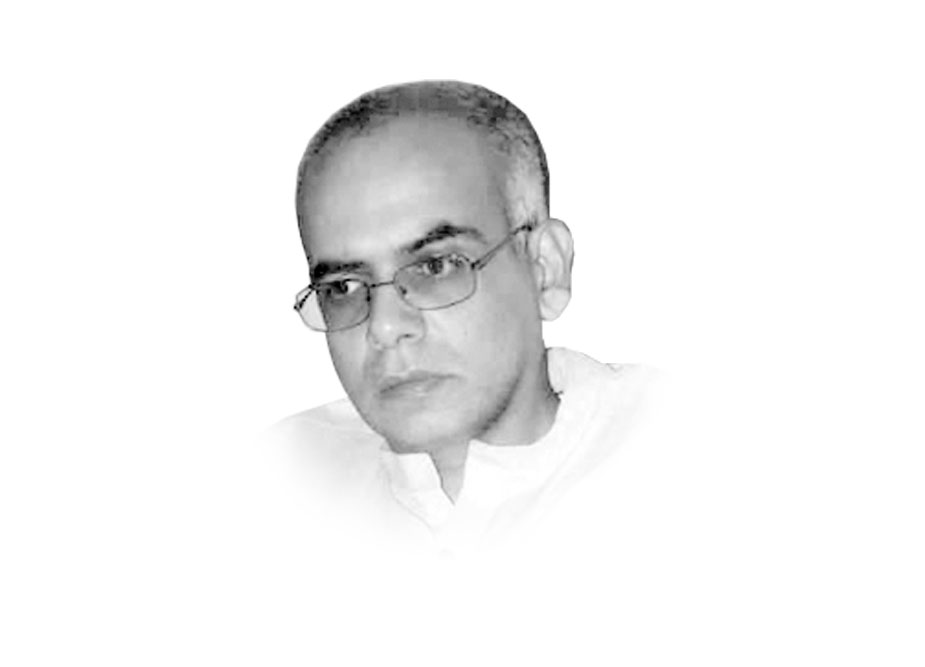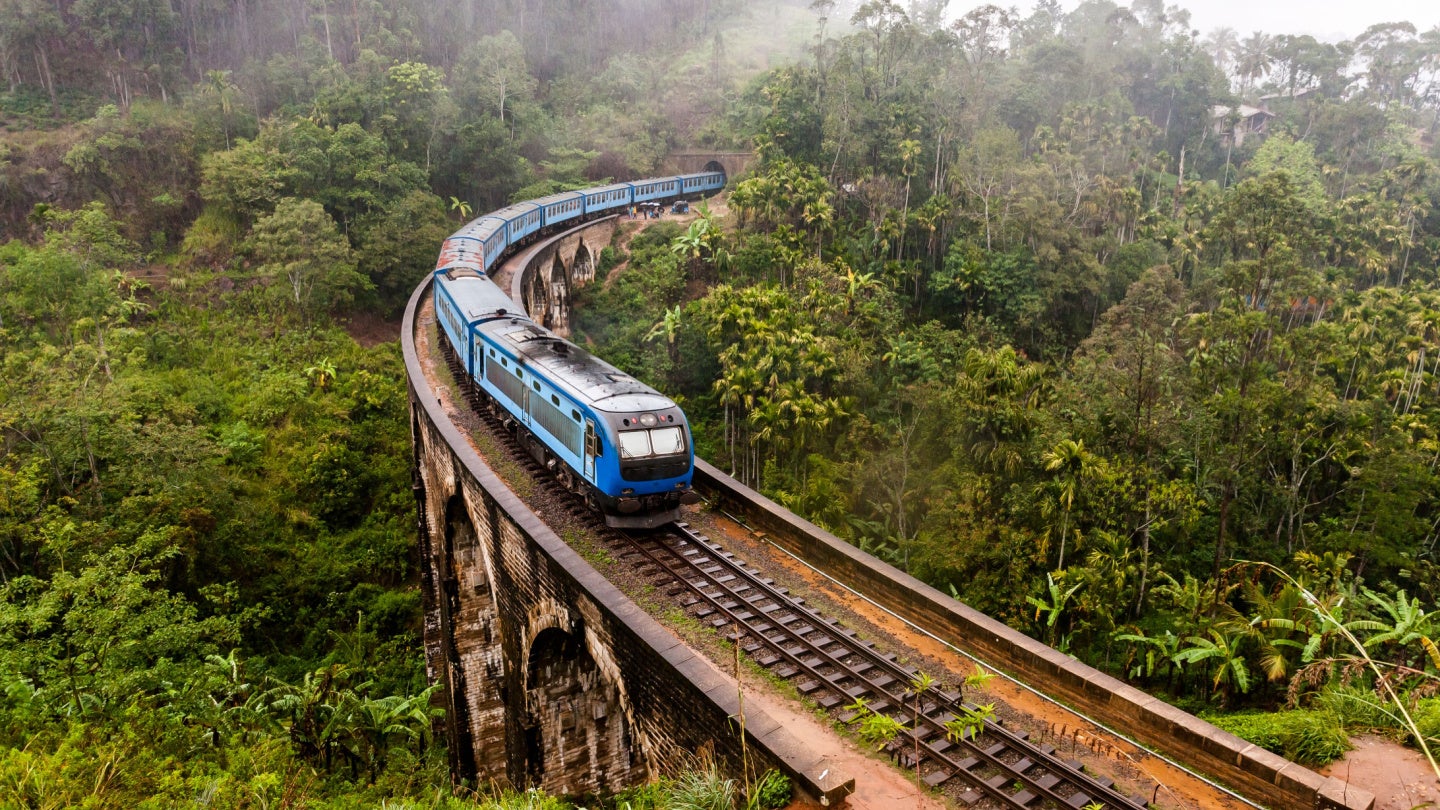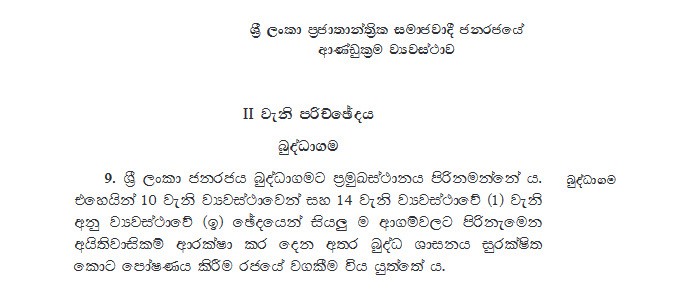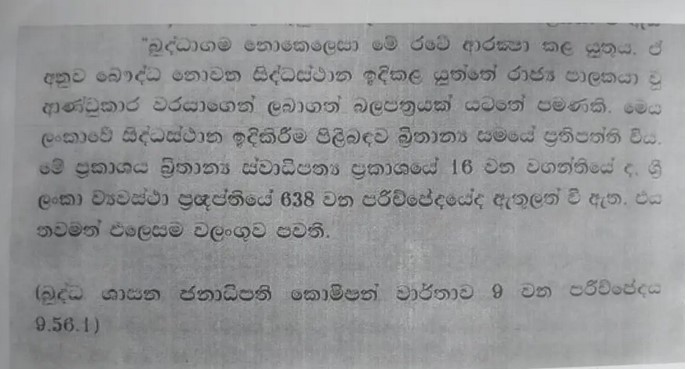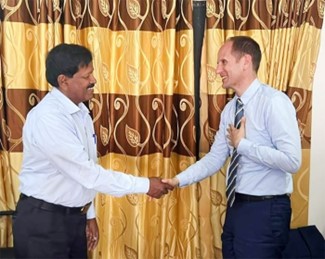චානක බණ්ඩාරගේ
ජාතික ආරක්ෂාවට පසු අන් සියළු දේට වඩා තමනට වැදගත් රටේ ඉතිහාසය යයි ඇමරිකානුවන් පවසයි. එය දැනුවත්ව විකෘති කිරීම එම රටේ සිරේ යන වැනි වැඩකි. බොහෝ දියුණු යුරෝපා රටවල්ද තම ඉතිහාසය විකෘති කිරීමට කිසිසේත් ඉඩ නොදේ. උදාහරණයක් ලෙස 2වෙනි ලෝක මහා යුද්ධයේදී නාට්සි වරුන් විසින් යුදෙව් සංහාරයක් නොකළේය යයි කියන්නෙකුව සිර ගත කිරීමේ දැඩි නිතී යුරෝපයේ බොහෝ රටවල ඇත.
අප රටේ?
අවුරුදු දෙදහසකට වඩා පැරණි, ලෝක උරුමයන් වන, අදත් අළුතින් හමුවෙන, ඉතා වටිනා පුරා විද්යා ස්මාරඛ සුරක්ෂිත කිරීමේ උවමනාවක් රජයනට සහ රටවැසියනට නැත.
පුරාවස්තු විනාශ කිරීමට, වෙනස් කිරීමට සහ සොරකම් කිරීමට සැදී පැහැදුණු අය නම් ඇත.
අද සිංහල ඉලෙක්ට්රොනික් සහ සමාජ මාධ්ය විශේෂයෙන්ම යු ටියුබ්, හිතු මතේ රටේ ඉතිහාසය විකෘති කරයි. සිංහල මුද්රිත මාධ්ය මඟින් මෙය සිදුවීම අඩුය.
මේවා මෙසේ සිදුවන්නේ රටේ වැසියාට තම ඉතිහාසය ආරක්ෂා කර ගැනීමේ අවශ්යතාවය ගැන උවමනාවක් නැති නිසාය. රටට අවංකවම ආදරය කරන පුරවැසියන් අද ඉතා විරලය.
ඉතිහාසය ගැන උවමනාවක්/උනන්දුවක් නැතත් නාළිකා වල සුපර් ස්ටාර්, ඩ්රීම් ස්ටාර්, වටිනාකමක් නැති ටෙලි ඩ්රාමා නම් ජනතාව නිදි මරමින් බලත්.
අප කාගේ කවුද, අප අද මේ තත්ත්වයේ සිටින්නේ කෙසේද වැනි දේ (ඉතිහාසය) නොවිමසන සමාජයකි දැන් නිර්මාණය වී ඇත්තේ.
‘ඔබ සියල්ලෝම ශ්රී ලාංකිකයෝය, ඒ ඇති’ වැනි සංකල්පයකි මෑත රජයන් විසින් ජනතාවට දෙනු ලැබුවේ.
ශ්රී ලංකාවේ තරම් ඉතිහාසය ඉතා හොඳින් ග්රන්ථාරූට කරන ලද වෙනත් කිසිම රටක් ලොව නැතැයි කිවේ 20වෙනි ශත වර්ෂයේ මුල් භාගයේදී පොන්නම්බලම් රාමනාදන් මහතාය.
නමුත්, අද මහාවංශය, විජයාගමනය, මහින්දාගමනය, බුදු රදුන් දඹදිව ඉපදීම, සීගිරි කාශ්යප ආදී සියල්ල බොරු යයි කියන භායනක ගණයේ පුරාවිද්යාඥයයෝ, ඉතිහාසඥයයෝ ශ්රී ලංකාවේ පහළ වී ඇත. මොවුන් දැනුවත්ව (චේතනාන්විතව) මේ රටේ ඉතිහාසය විකෘති කරත්. මොවුන් තම බොරු ඉතා රසවත් ලෙස ජනතාව හමුවේ තබයි.
මේ අයට සමාජයේ ඉමහත් ගරු බුහුමන් ලැබේ. රාජ්යානුග්රහයද ලැබේ.
සිංහලයාගේ සම්භවය දෙමළ විය යුතු බවත්, සිංහලයාට ප්රථමව මේ රටේ ද්රවිඩයන් සිටී බවත්, කුවේණීය දෙමළ බවත්, මහින්දාගමනයට පෙර මේ රටේ ‘දෙමළ බෞද්ධයන්’ සිටී බවත්, මහාවංශය/විජයාගමනය සත්ය නොවන බවත්, සැමදා යාපනයේ ස්ථිර දෙමළ රජුන් සිටී බවත්, පන්ඩුකාභය රජු දෙමළ බවත්, සීගිරිය කාශ්යප රජුගේ නිර්මාණයක් නොවිය හැකි බවත් වැනි බොරු කරුණු බොහොමයක් සහිත කථා ජනතාවට කියා පාන එක් ප්රසිද්ධ පුරාවිද්යාඥයෙක් සිටී. මොහුගේ ‘නොනවතින ඉතිහාසය’ වැනි නමකින් හඳුන්වන යු ටියුබ් වැඩ සටහන රටේ ඉතාම ප්රචලිත යු ටියුබ් වැඩසටහනකි. මොහු කොළඹ දිස්ත්රික්කයේ විශ්ව විද්යාලයක පුරා විද්යා අංශයේ ප්රධානියාද වේ.
රටේ අවාසනාවට මොහු පාසැල් ළමුන්ගේ ඉතිහාසය පෙළ පොත් සැදීමේ සම්පාදක මණ්ඩලයේ ප්රමුඛ සාමාජිකයෙකි. මොහුට ස්තුතිවන්ත වෙන්න පාසැල් වල 6, 7, 10 ශ්රේණි වල පෙළ පොත් වල ඇත්තේ සිංහල බෞද්ධයා පහත හෙලන බොරු ඉතිහාසයකි (මොහු සම්බන්ධ නැති 8, 9 ශ්රේණි වල ඉතිහාසය පෙළ පොත් වල වැරදි ඉතිහාසයක් නොමැත).
ශ්රී ලංකා ජාතිය ආරම්භ වුයේ මීට අවුරුදු ලක්ෂ ගණනකට උඩදී ශ්රී ලංකාවට යාලෙන් ගොඩ බට හෝමෝ සපියෙන් වරුන්ගෙන් බව කියන ඔහු ඒ නිසා සිංහලයා ඔවුන් අතරින් පසුව පැණ නැගුන ජාතියක් බව නොකියා කියයි. එවිට, විජය සිංහලයාට අදාළ නොවේ. ඒ අනුසාරව පාසැල් ඉතිහාසය පෙළ පොත් වෙනස් කිරීමට හැකි වීම තමන්ගේ පුද්ගලික ජයග්රණයක් ලෙසට මොහු පාරම් බායි.
මොහු නොකියා කියනුයේ ශ්රී ලංකාවේ දෙමළ අයද මේ හෝමෝ සපියෙන්ගෙන් මෙරට තුලම බිහිවූ ජාතියක් බවයි.
මෙතුවක් කල් තිබු පිළිගැනීම වුයේ අපේ දමිළ සහෝදරවරු සිංහලයාට බොහෝ පසුව තමිල්නාඩුවෙන් ආ අය බවයි.
අපේ දමිළ සහෝදරවරුන්ගේ නිජභිම තමිල්නාඩුව නම් (එහි දෙමළ ජනගහනය කෝටි 8ට එහාය), ඔවුනගේ නිජභිම ශ්රී ලංකාවේද විය නොහැක.
කිසිම ජාතියකට සම්භවයන් (origin) දෙකක් තිබිය නොහැක.
උදා: ඇන්ග්ලෝ සැක්සන්වරුන්ගේ (ඉංග්රීසි කථා කරන ‘සුද්දන්’) සම්භවය ක්රි ව 5 සියවසේ එංගලන්තයයි. ඇන්ග්ලෝ සැක්සන්වරුන් දැන් ඔවුන් ජීවත් වන වෙනත් රටවල් – ඕස්ත්රේලියාව, නව සීලන්තය, කැනඩාව, ඇමරිකාව වැනි රටවල්ද තම නිජභිම (සම්භවය) යයි කියා කිව නොහැක. ඔවුන්ගේ (එකම) නිජභිම එංගලන්තයයි.
ස්කොට්ලන්ත, වේල්ස් සහ උතුරු අයිරිෂ් ජාතිකයන් මහා බ්රිතාන්ය ජාතිකයන් වුවත් එංගලන්ත සම්භවය ඇති ඇන්ග්ලෝ සැක්සන්වරුන් නොවේ.
දෙමළ අය සිංහලනුන්ට වඩා මේ රටේ පැරණි බව හෝ සමානව පැරණි බව හැඟවෙන බොහෝ කථා මෙම පුරා විද්යාඥ මහාචාර්යවරයා වෙනම කියා ඇත.
මොහුගේ ලොකුම බොරුවක් දෙස බලන්න – ශ්රී ලංකාව ඉන්දියාවෙන් වෙන් වුනේ මීට වසර 7,000 ට පෙර බව කිහිප වරක් පවසා තිබු මොහු එය අමුලික බොරුවක් බව අප පෙන්වා දුන් පසු ඒ වෙන්වීම සිදු වුයේ මීට වසර ලක්ෂ 7ට පෙර යයි දැන් පවසයි. පිළිගත් පුරා විද්යාඥයෙකුට/මහාචාර්යවරයෙකුට මෙවන් වරදක් කර ගැලවී යා හැකිද?.
මීට වසර 7,000කට පෙර ශ්රී ලංකාව ඉන්දියාවට ඇඳි තිබුණි නම් (මොහු කී පරිදී) සහ එවකට එහි ඔහු කියන අති ශ්රේෂ්ට, ලොව වෙන කොහේවත් නොතිබුනා වැනි ශිෂ්ටාචාරයක් තිබුණි නම්, එය අයත් වන්නේ ඉන්දියාවටය (එකළ, ශ්රී ලංකාව දැවැන්ත ඉන්දියාවේ කොටසක් ව තිබු බැවින්). එසේ නම්, එවිට අපද ඉන්දියානුවෝ විය යුතුයි.
මොහු වනාහි ඉතිහාස ෆැක්ටරියකි.
විශේෂත්වය නම් ඔහු අද කියන ඉතිහාසය නොවේ හෙට, අනිද්දා සහ ඊළඟ සතිවල/මාසවල කියනුයේ.
මානව පරිනාමයේදී මීට වසර ලක්ෂ ගණනකට පෙර නියැන්ඩතල් (මනුෂ්යම නොවේ) හෝමෝ සපියෙන් බවට (මනුෂ්ය) පත්වුයේ නැගෙනහිර හෝ දකුණු අප්රිකාවේදීය. ඔවුහු ආසියා මහාදිවීපයටද, ඒ අයුරින් ලොව සෙසු රටවල් පුරාද පැතිර ගියහ.
හෝමෝ සපියෙන්වරු ජාතියක් (nationality) ලෙස ගණන් ගත නොහැක. ඇමීබා වැනි තනි සෛලයකින් ජීවය සැදුනා නම් (පරිනාමවාදයට අදාලව) හෝමෝ සපියෙන්වරුන්ගෙන් පුර්ණ මනුෂ්ය ප්රජාව බිහි විය.
ලොව සැම මනුෂ්යයෙක්ම හෝමෝ සපියෙන්වරයෙකි (ඔබ, මම ඇතුළු).
ඉදින්, තමන්ගේ ජාතියේ ආරම්භකයා හෝමෝ සපියේන්වරු බව උජාරුවෙන් පවසන, තම රටේ දරුවන්ට ඉතිහාසය පාඩම් මඟින් ඒ බව කියාදෙන, ලොව එකම රට ශ්රී ලංකාව විය යුතුයි. ඒ, මෙම මහාචාර්ය පුරාවිද්යාඥයාට ස්තුති වන්ත වෙන්නටය.
මීට කළින් මෙවැනි ඉතිහාසයක් කිසිම ඉතිහාසය පොතක සඳහන් නොවුණි.
ශ්රී ලාංකිකයන්ගේ (දෙමළ සහ සිංහල) ස්මාරම්භාකයා හෝමෝ සපියෙන් බවත්, සියළු පාසැල් සිසුනට ඒ පරිදි දැන් ඉගැන්වීමත්, ඒ මඟින් විජයට (සිංහලයාගේ ස්මාරම්භාකයා) පෙළ පොත් මඟින් තැනක් නොදීම ගැනත් බෙදුම්වාදීන් – විශේෂයෙන්ම උතුරේ, ඉතා සතුටින් සිටිනවා විය යුතුයි.
මෙම මහාචාර්ය පුරාවිද්යාඥයා (සහ ඔහුගේ අනුගාමික නුතන ඉතිහාසඥයන්/මාධ්යවේදීන්) උත්සහ දරන්නේ අපට ඇති පැහැදිලි ඉතිහාසය අවුල් ජාලාවක් බවට පත් කිරීමටය. එහිදී, අපේ දරුවන් නොමඟ යැවීමට තැත් කිරීම සමාව නොදිය හැකි වරදකි.
මෙවැනි බොරු විශ්වාස කරන සිංහලයාද උනන්දුවෙන්, ප්රීති ප්රමෝදයෙන් ඔහුට සවන් දෙත්. ඔහු ජාතියේ ගැලවුම්කරුවා ලෙස සිතයි. රජය විසින් ඔහුව සුවිශේෂ කමිටුවලට පත් කරයි.
මොහු පවසන්නේ ලොව සියල්ලන්ටම පෙර වාගේ – මීට වසර 49,000 පෙර වී වගාව පටන් ගත්තේ අපය කියායි (නැත, චීනයයි – ඒ ද, වසර 8,000 පෙරය); යකඩ සොයා ගැනීම කලේ අප යයි ඔහු කියයි (නැත, චීන හෝ ඊජිප්තුවාසීන් විසින් මීට වසර 5,000 පෙර), මීට වසර දස දහසකට පමණ පෙර ශ්රී ලාංකිකයෝ හෝර්ටන් තැන්නේ බාර්ලි, ඕට්ස් වැවුහ යයි ඔහු කියයි (බාර්ලි ඊශ්රායල් (පලස්තීන) වරුන් සහ ඕට්ස් චීන වැසියන් විසින් ආරම්භ කලේ, පිළිවෙලින් වසර 8,000 සහ 7,000ට පෙරය.
මේ මහාචාර්ය පුරාවිද්යඥයාගේ වැඩසටහන් වල ස්වභාවය නම් එකම කරුණ විවිධ අවස්ථාවලදී විවිධ ලෙස දැක්වීමයි. උදා: වසර 49,000 ට පෙර ශ්රී ලංකාවේ ලෝකයේ බාර්ලි, ඕට්ස් වැනි වගාවන් තිබුනේය (වී මෙන්), යනුවෙන් ඔහු කී දෙය වෙනත් වැඩසටහනක එය වසර 17,500කට පෙර වශයෙන් වෙනස් කර තිබුණි. එය වසර දස දහසක් බවද කීය.
මේ මහාචාර්ය පුරාවිද්යඥයා කියන අන්දමට නම් ඉන්දුවැලි සහ මොහෙන්ද ජාරෝ හරප්පා ශිෂ්ටාචාරයන්ටත් වඩා (මේවා මුළු ලොවම පිළිගත් ප්රථම උසස්ම කෘෂිකාර්මික ජීවන ක්රමයන්ය, මේවාද මීට වසර 5,000ක් තරම් වත් පැරණි නැත) ඉපැරණි, ඉතාම සශ්රීක ශිෂ්ටාචාරයක් මේ රටේ මීට වසර 49,000ට ඉහතදී තිබී ඇත. මෙහි සිටී කාන්තාවන් අද නූතන අය මෙන් ඇස් අවට පාට කිරීම වැනි උසස් රූපලාවන්ය කාර්යයන්හි නියැළුණු බවත්, අප පිටරටවලට තානාපති වරුන් පිටත් කර හැරීය බවත් මොහු පවසයි. තානාපති සේවයන් ප්රාග්-ඓතිහාසික යුගවල තිබුණිද?
එකළ (වසර 49,000 ට පෙර), මුළු ලොවම තිබුනේ කෘෂිකාර්මික (agrarian) නොව ඉතාම ප්රාථමික දඩයම්කාර (hunter & gatherer) සමාජ ක්රමයක් නොවේද?
මේ මහාචාර්ය පුරාවිද්යඥයා දැන් කලක විට විදේශගත ශ්රී ලාංකිකයන් මෙහි ගෙන්වා ඔවුනට සිගීරිය පිළිබඳව විශේෂ නේවාසික පන්ති (දින 14 ආදී) පවත්වයි (සීගිරිය කාශ්යප රජුගේ නිර්මාණයක් නොවේය යන බොරුව කීවේද මොහුය). අප දන්නා තරමින්, මේ වෙනුවෙන් ඔහුට සිගීරියට පිවිසීමට වෙනම දොරටුවක් පුරාවිද්යා දෙපාර්තමේන්තුව විසින් ලබාදී තිබුණි. රටට ඩොලර් ගෙන එනවා යයි කියා මොහු ආරම්භ කර ඇති මේ ව්යාපාරයෙන් කොතරම් ඩොලර් ප්රමාණයක් මොහු සහ මොහුගේ මාධ්ය සගයන් මධ්යම සංස්කෘතික අරමුදලට බැර කරන ලදද?
මොනයම් අහේතුවකට වසර 2,500කට අසන්න අපේ පැරණි ඉතිහාසය දැන් මේ අයට මදී වී ඇත. ‘ ලොව අන් සියළු රටවලට වඩා අප ශ්රේෂ්ට ව සිටියෙමු’ (‘අපි තමයි හොඳටම කලේ’ න්යාය), යන මිත්යාවක් ජනතාව අතර පතුරවමින්, අප මෙතෙක් වසර සිය/දහස් ගණනක් තිස්සේ පිළිගත් ඉතිහාසය කසළ ගොඩට දමමින් සිටිත්.
මේ නිසා, මෙතෙක් මුළු ලොවම පිළිගත් අපේ ශ්රේෂ්ට ඉතිහාසයට අප විසින්ම පහර දෙන්නෙමු.
මෙයින් වන්නේ තියෙන ඉතිහාසයත් අපට නැතිවී යාමය.
ඉතිහාසය යනු විටින් විටින් විට වෙනස් කරමින් කිව හැකි දෙයක් නොවේ. අප කැමති වුවත් නැතත් අපට ඇති ඉතිහාසය අප පිළිගත යුතුය. අපට වුවමනා ලෙස විටින් විට වෙනස් කිරීමට ගියහොත් ලෝකයා ඉතිහාසය පිලිබඳ අපේ නිවැරදි ඉදිරිපත් කිරීම් පවා ගණන් නොගනු ඇත.
ප්රභාකරන්, ඇන්ටන් බාලසිංහම් හැකි තරම් උත්සහ කලේ මේ දේ කිරීමටය. අද දෙමළ බෙදුම්වාදීන් උත්සහ කරන්නෙත් මේ දේමයි.
සිංහලයන් වශයෙන් අපගේ උරුමය අනන්යතාවය අපට ලැබී ඇත්තේ වසර 2,500කට අසන්න අපේ ප්රෞඩ ඉතිහාසයෙනි. මේ බොරු ඉතිහාස කථා නිසා අද එය ලෝක වාසීන්ගේ පවා සැකයට ලක්වීමට පුළුවන.
ඉතිහාසය/පුරාවිද්යාව පිළිබඳව නව සොයාගැනීම් ඇත්නම් ඒවා සනාථ කරන විධිමත් ක්රම වේද තිබේ. ‘Peer review’ නැමති සිද්ධාන්තය තුලින් ලෝකයේ පිළිගත් පුරාවිද්යා/ඉතිහාස සඟරා/ග්රන්ථ වල ඒවා පළ කල යුතුය. එවිට, ඒ අයගේ සමකාලිනයන් පිළිතුරු ලිපි/පර්යේෂණ මඟින් එම නව සොයා ගැනීම් පිලිගැනීම හෝ නොගැනීම කරත්.
අප දන්නා පරිදි මේ මහාචාර්ය පුරාවිද්යඥයාගේ නව/නුතන සොයාගැනීම් කිසිවක් ජාත්යාන්තරය විසින් පිලිගෙන නොමැත.
අප දන්නා පරිදි, අප හිතවාදී, අසල්වාසි ආසියානු රටක පවා පිළිගත් එක් පුරාවිද්යාඥයෙක්/ඉතිහාසඥයෙක්වත් මොහුගේ අති මහත් වූ මෙම නව සොයාගැනීම් කිසිවක් පිළිගෙන නැත.
විදේශ පුරාවිද්යාඥයන්, ඉතිහාසඥයන් ශ්රී ලංකාවට පැමිණ පර්යේෂණ පැවැත්වීම අඩපන/දුර්මුක කරන ආචාර්ය ධර්ම පද්ධතියක් මොහු සකසා, දැන් නිතීගත කර ඇත.
හුදු මිත්යාවක් වන රාවණා ශ්රී ලංකාවේ රජ කෙනෙක් ව සිටී බව කියන උගත් බෞද්ධ භික්ෂුන්වහන්සේලා ද අද එමටය. එදා (1995න් පසු, යුද්ධය අවසානයෙන් පසු මෑතක් වන තුරු) බෙදුම්වාදයට හොරෙන් උදව් දෙනවා යයි චෝදනා ලැබු දෙමළ ආධිපත්ය ඇති රුපවාහිනි මාධ්යය (ශ්රී ලංකාවේ ප්රධානතම), සංකර FM නාළිකා ඉතා රසවත් වැඩසටහන් මඟින් මේ අදහස ජනතාව තුලට කාවද්දා ඇත. එසේ කරන ලද්දේ අප රටේ ඇති පැහැදිලි ඉතිහාසය අවුල් කිරීමටය. ද්රවිඩ බෙදුම්වාදීන්ට නව අත් වැලක් සැපයීමටය.
රාවණා ද්රවිඩ බව මුළු බටහිර ලොවම, දකුණු ඉන්දියාවම සහ උතුරු ඉන්දියාවේ ඇතැම් අය පිළිගන්නා බව රාවණා සංකල්පය උච්ච ලෙස ප්රචලිත කරන අපේ ගරුතර සංඝයාවහන්සේලා සැලකීමට නොගන්නේ මන්ද?
ත්රිකුණාමලයේ කෝනේෂ්වරන් (කලින් බෞද්ධ සිද්ධස්ථානයක්), නාගධීපයේ හින්දු කෝවිල් දැන් උග්ර ලෙස රාවණා වෙනුවෙන් කැප වුනු හින්දු දේවාලයි. තවත් රාවණා හින්දු කෝවිල් ශ්රී ලංකාවේ බොහෝයි. ඉදිරියටත් ඉදි වෙනු ඇත. බෞද්ධ පන්සල්වල රාවණා ගැන සඳහන් නොවේ.
දැන් ශ්රී ලංකාවේ වතුකරයේ දෙමළ අයද මේ දේම කියති – රාවණා තමන්ගේ කෙනෙක්ය කියා.
මේ නිසා ඇතිවිය හැක්කේ ඝට්ටනයකි, රාවණා ගේ අයිතිය උදෙසා – මේ රටේ ඉතා සමගිව ජීවත්වන සිංහලයන් සහ ද්රවිඩයන් අතර. මෙවැනි ඝට්ටනයක් අපට අනවශ්යය.
වර්ෂ 1,000 එහා පමණ සිට මෑතක් දක්වා මේ රටේ පිළිගත් මතය වුයේ රාවණා යනු මහාභාරත ග්රන්ථයේ රාමායණය පරිච්චේදයේ එන හුදු කථාවක් පමණක් ලෙසිනි. අප කළ යුත්තේ එම පදනමේම සිටීමයි.
බලගතු ඉන්දියාව රාවණා ගැන මොන අර්කථන දුන්නත් අප ඔවුන් සමඟ යා යුතු නොවේ. අපටම ආවේනික වූ සිංහල බෞද්ධ ඉතිහාසයක් ඇත. අපේ ප්රාරම්භකයා විජයයි.
විජය රජු වැනි සල්ලාල, සෙල්ලක්කාරයෙක්ගෙන් සිංහලයා පැවතෙන්නේය යන්න පිළිගැනීම අපට මදි කමක් ලෙස බොහෝ සිංහලයෝ දැන් සලකත්. මේවා කලින් කී රුපවාහිනි මාධ්ය, සංකර FM නාළිකා විසින් අප තුලට දමන ලද විෂම අදහස්ය.
රටක ඉතිහාසය එක් එක් කෙනාට උවමනා විධියට වෙනස් කර ගත හැකි දෙයක් නොවේ.
නවීන සුදු ඕස්ත්රේලියාව බිහි කිරීමට පුරෝගාමී වුයේ මහා බ්රිතාන්යයෙන් එම රටට යවන ලද සිරකරුවෝය, 1788 පමණ සිට. සිඩ්නි, මෙල්බර්න්, බ්රිස්බන් නගර තනිකරම බිහි කලේ මේ අයයි. ඔවුන් පැමිණීමෙන් වසර 50 ට පමණ පසුවය සිරකරුවන් නොවන බ්රිතාන්ය සංක්රමණිකයන් ඕස්ත්රේලියාවට යවනු ලැබුවේ. නමුත්, තම රට ගොඩ නැගු මුතුන් මිත්තෝ බ්රිතාන්යයෙන් එවන ලද සිරකරුවන් බව සුදු ඕස්ත්රේලියානුවෝ අදත් සතුටින් සහ ආඩම්බරයෙන් පිළිගනිත්. සත්ය වසන් කිරීමට ඔවුනට නුවමනාය.
රාවණයෙක් මෙහි සිටියේ නම් එය විජය ඒමට වසර 2,000 ට පමණ පෙරය.
මේ නිසා, සිංහලයාට වඩා මේ රටේ ද්රවිඩයන් පැරණිය යන විග්නේස්වරන්, සිද්ධාර්ථන්ගේ මතය ස්ථාපිත කිරීම සඳහා ද්රවිඩ අන්තවාදීහු රාවණාව භාවිතා කරති.
රාවණා ද්රවිඩය යන ලෝක මතය ඔවුනට වාසි බව ද්රවිඩ අන්තවාදීන් දනිත්.
බුදු රජාණන් වහන්සේ ශ්රී ලංකාවට වැඩම කරන විට මෙහි සිටියේ යක්ෂ, දේව, නාගයෝය (කුවේණි යක්ෂය). මේ තුන් කොටස හෙළයන්ය. වසර 40,000ට පෙර මෙහි සිටී බවට සාක්ෂි හමු වී ඇති බලන්ගොඩ මානවකයා ද හෙළයෙකි.
මේ හෙළයන් තම්බපන්නියෙන් මෙරටට ගොඩ බට විජයගේ සිංහ කාණ්ඩය (සිංහයෙකුග් මෙන් නිය වැඩි තිබු සිංහබාහු රජතුමාගේ පුතා) සමඟ මුසුවී සිංහල ජාතිය බිහි විය.
විජය සහ කුවේණිගේ දරු දෙදෙනා (ජීවහත්ත සහ දිසාලා) ගෙන් වැදී පරපුර පටන් ගැනිණ යයි මහාවංශය දක්වයි. මේ දෙදෙනා විජයගෙන් පසු රාජ්ය බලය අල්ලා ගැනීම සඳහා සටන් නොකළහ; දරුවන් වැද, වැද්දන් ලෙසම දෙදෙනා මැරී ගියහ.
විග්නේස්වරන්, සිද්ධාර්ථන් න්යායනට අනුව නම් මේ සියල්ලෝ (හෙළයෝ + වැද්දෝ) ද්රවිඩ විය යුතුය.
සිංහලයා බිහිවුයේ විජයගෙන් නිසා රාවණා (විජයට පෙර සිටී) සිංහල නොව හෙළයෙක් බව අප කීවත් ජාත්යාන්තරය එය පිළි නොගනී.
ලොව පිළිගත් විකිපීඩියා වෙබ් අඩවිය මෑතකදී සඳහනක් යොමු කර ඇත්තේ ලොව මෙතෙක් සිටි භක්තිවන්තම ශිව භක්තිකයා ශ්රී ලංකාවේ රාවණා රජු කියායි, එනම් රාවණා ද්රවිඩයෙක් බවයි. රාවණා විෂ්ණු දෙවියන්ගේ දොරටුපාලකයා බව ද වීකිපීඩීයා සඳහන් කරයි. BBC, Encyclopedia of World History, Oxford Dictionery ද මේ මතයම දරත්.
රාවණා ඇල්ල, රාවණා කන්ද, රාවණා දේවාල වැනි නම් වලින් ස්ථාන අප රටේ ඇත. මෙහි රාවණා යනුවෙන් අදහස් කරන්නේ රාවණා යන රජෙක් ගැන නොව ‘ශබ්ධ’ යන්නයි. රාවණා ඇල්ල ඉතා ශබ්ධය (‘ශබ්ධ ඇල්ල’).
සිතා එළියට ඒ නම ලැබුනේ රාමායනයේ එන සිතා නිසා නොව නුවරඑළිය දිස්ත්රික්කයේ ඉතාම සීත ගමක් වීම නිසායි. ශ්රී පාදයේ ඇති සීත ගඟුලට ඒ නම ලැබුනේ එහි ඇති අධි ශීත වතුර මිස රාමායණයේ එන සිතා නිසා නොවේ.
රාවණයෙක් මේ රටේ සිටියේය යන්න සනාථ කෙරෙන කිසිම පුරා විද්යා සාක්ෂියක් මේ දක්වා හමුවී නොමැත. ඒ නිසාය රාවණාවාදීන් කාශ්යප රජ විසින් තනන ලද සීගිරිය රාවණාගේ නිර්මාණයක්ය යන බොරුව ප්රචාරය කරනුයේ.
බුදුරාජාණන් වහන්සේ උපන්නේ දඹදිව නොව ශ්රී ලංකාවේය යන අමූලික, අසත්ය මතයක් ගොඩ නඟමින් සිටින පිරිසක් ඇත (නැවතත්, ‘අපි තමයි හොඳටම කලේ’ න්යාය)
මෑත කාලයේදී මේ මිත්යාව ප්රචලිත කිරීම ඉතාම තීව්ර වී ඇත. මෙරටින් පමණක් නොව මුළු ලොවින්ම බුදු දහම විනාශ කිරීමේ කුමන්ත්රණයක්ද මේ?
මෙය, අප සම්බුදු අමා මෑණියන්ට ද කරන අපහාසයකි. ඉන්දියාව, නේපාලය වැනි මිත්ර රටවල් තරහ කර ගැනීමේ උත්සහයක්ද විය හැක.
ආදී දෙමළ බෞද්ධයන් සිටියාය කියා මතයක් බෙදුම්වාදීන් දැන් ගොඩ නගනුයේ උතුරෙන් සහ නැගෙනහිරෙන් හමුවූ සහ දිගටම හමුවෙන ශිලා/ටැම් ලිපි, සිංහල රජවරුන් ඉදි කල ඉපැරණි ගල් කුළුණු, සඳකඩ පහන් ආදියේ දෙමළ අක්ෂර නොමැති නිසා, සිංහල නොමැති, සංස්කෘතික (Sanskrit) අක්ෂර පමණක් ඇති ඒවා සිංහලයන් නොව ද්රවිඩයන් – ඊනියා ආදී ද්රවිඩ බෞද්ධයන්, විසින් කරන ලද නිර්මාණ බව ලොවට වංක ලෙස පෙන්වීමටයි. මොවුන් කුරින්දිහි (මුලතිව් දිස්ත්රික්කයේ කුරුඳුමලේ) කරන්නේ මෙයයි.
සිංහලට සංස්කෘතික සම්භවයක් ඇතත් (හින්දි, උර්දු, බෙන්ගාලි මෙන්) දෙමළ භාෂාවට එසේ නැත. දෙමළ වනාහි ද්රවිඩියන් භාෂාවකි.
සිංහලයෝ හින්දි, උර්දු, බෙන්ගාලි, ඉරාන, ඇන්ග්ලෝ සැක්සන් (උදා: එංගලන්ත/ඇමරිකන්/නව සීලන්ත), ජර්මන්, ස්කෑන්ඩිනේවියන් වරුන් මෙන් ආර්යයෝය (Aryans). ද්රවිඩයෝ ආර්යයන් නොවන බවයි පිළි ගැනීම.
හිට්ලර් ඉන්දියානුවන් කෙරෙහි දැඩි මිත්රත්වයක් පෑවේ මේ නිසාද?
‘ආදී ද්රවිඩ බෞද්ධයන්’ යන ජන කොටසක් ගැන කිසිම ඉපැරණි ඉතිහාස පොතක සඳහන් නොවේ.
එසේ නම් දැන් මෑතක සිට මෙවැනි මතයක් ජනිත වන්නේ කෙසේද? නැවතත්, මෙය ද්රවිඩ බෙදුම්වාදය සාක්ෂාත් කර ගැනීම සඳහා ගෙන එන ලද නව සංකල්පයකි.
යුධ ජයග්රණයෙන් පසු උතුරේ සහ නැගෙනහිර සමහර සිංහල බෞද්ධ පුරාවස්තු භුමි වල හින්දු කෝවිල් අලුතින් ස්ථාපනය විණ. දැනුදු සිදුවේ, විශේෂයෙන්ම නැගෙනහිර.
ඉපැරණි ගල් කුළුණුවල (සිංහල රාජධානි යුගයේ – උදා: දෙවෙනි පෑතිස් රජ සමයේ) ත්රී ශුල කොටා ඒවායින් නව හින්දු කෝවිල් සාදා, ඉපැරණි කෝවිල් ලෙස පෙන්වත්.
මිහින්තලාවට දඹදීවින් වැඩම කළ මිහිඳු හිමියනට පෙර මෙහි බුදු දහම තිබුණු බවත්, රටෙහි සිටී රජතුමා සිංහල දේවානම් පියතිස්ස නොව දෙමළ දේවානම් පියතිස්සම් බවත් බෙදුම්වාදීහු පවසත්. මේ මතයට ඉහත කී පුරා විද්යා මහාචාර්ය පුරාවිද්යඥයාද යම් තරමින් හූමිටි තබයි.
අපේ ජාතියේ ප්රධානම ග්රන්ථය වන මහාවංශය හේතු නොපෙන්වා බැහැර කරන මෙම මහාචාර්ය පුරාවිද්යඥයා පෙන්වීමට උත්සහ කරන්නේ සිංහලයනට පෙර මෙම භුමියේ දෙමළ අය වාසය කළ බවයි. මේ බව ඔහු විසින් ප්රමුඛත්වය දී සම්පාදනය කරන ලද පාසැල් පෙළ පොත් වල අනියම් ලෙසින් දක්වා ඇත.
මේ කරුණ පෙන්වා ජාත්යාන්තර නිතීය යටතේ ඊලාම දිනාගැනීමට විග්නේස්වරන්, සිද්ධාර්ථන්, සුමන්තිරන් වැන්නන් අනාගතයේදී උත්සහ දරනු ඇත.
මහාවංශය බොරු බව ප්රභාකරන් සෑම විටම කීය. මහාවංශය සම්බන්ධව ඔහු තුල තිබුනේ තදබල තරහකි. LTTE න්යායාචාර්ය ඇන්ටන් බාලසිංහම් මහාවංශය බොරු බවට දැඩිව මත පල කළේය. ඔවුන් නික්ම ගිය පසු අද TNA වැනි සහ වෙනත් ඊලාම්වාදී ද්රවිඩ සංවිධාන මේ අදහස තවදුරටත් ප්රවර්ධනය කරත්.
මෙම මහාචාර්යවාරය/පුරාවිද්යඥයා දේශන පවත්වන නාලිකාවේ වැඩ සටහන්වලට සවන් දීමේදී සිංහලයාගේ සම්භවය දකුණු ඉන්දියාව බව පෙන්වීමට ඔහු තදින් (සූක්ෂම ලෙස) උත්සහ දරන බවක් පෙනේ. නමුත්, සිංහලයාගේ සම්භවය, විජය නිසා, උතුරු ඉන්දියාවයි (උතුරු ඉන්දියාවේ සිංහපුර, වංග දේශයේ, ලාට රටේ).
බෙදුම්වාදීන්ගේ තර්කය වන්නේ පෘතුගීසින් එන විට යාපනයේ සිටියේ දෙමළ රජෙක් බවත් ඉංග්රීසින් යනවිට ඔවුන් විසින් උතුරේ දෙමළ පාලනයක් නැවත නොපිහිටුවීමත්, ඔවුනගේ දෙමළ රාජ්යයේ නොකැඩුනු පුරුක ගැලවීම සිදු කලේ යුරෝපා අධිරාජ්ය වාදීන් නිසා (1505 සිට 1948 දක්වා), එක්සත් ජාතින්ගේ සංවිධානය විසින් උතුර (සහ නැගෙනහිර) දැන් නැවතත් දෙමළ ජනයාගේ පාලනයට ලබා දිය යුතු බවයි.
නමුත් පැරණි ඉතිහාස ග්රන්ථ පවසන්නේ පෘතුගීසින් ඒමට පෙර කාලයේ උතුර සැමදා පාලනය කලේ සිංහල රජවරුන් බවයි – මහනුවර හෝ කෝට්ටේ රජවරු. යාපනයේ යම් දෙමළ පාලනයක් වී නම් (සංකිලි වැනි) ඔවුහු මෙම සිංහල රජවරුන්ගේ යුව රජුන් වූ බවයි.
ආර්ය චක්රවර්ති මෙසේ සිංහල රජුට යටත්වූ යුව රජෙක්ව සිටියාද නැද්ද යන්න පැහැදිලි නැත. කෙසේ වෙතත් සිංහල සපුමල් කුමරා ඔහුව පරාජය කළේය. මේ කුමරාගේ පියා 6වෙනි පරාක්රමබාහු රජද මව කීරවැල්ල පරම්පරාවේ කුමරියක් බවත් ඉතිහාස ග්රන්ථ දක්වයි.
නමුත්, මෙම මහාචාර්ය පුරාවිද්යඥයාට අනුව (සහ වෙනත් ඇතැම් ඉතිහාසඥයනට අනුව) සපුමල් කුමරා දෙමළය.
කතරගම දෙවියන් දකුණු ඉන්දියාවේ උපන් දෙමළ රජ කෙනෙක් බවට පෙන්වන ප්රබල මතයක් ඇත. මෙම දෙවිඳුන් පිළිබඳව සැකසුනු මෑතක ප්රදර්ශණය වුනු ඉතා ජනප්රිය සිංහල චිත්රපටයක දැක්වෙන්නේද මෙයයි.
නමුත් ආදී සිංහලයා කතරගම දෙවිදුන් සැලකුවේ කතරගම ප්රදේශය පාලනය කල හෙළයෙකු වූ මහසෙන් (රජුගේ) පුනරුප්පත්තිය ලෙසයි (බුදු රජුන් කල මෙරට විසු).
බුදු රජාණන් වහන්සේ 3වෙනි වර ශ්රී ලංකාවට වැඩම කල අවස්ථාවේ (කැලණිය) උන් වහන්සේට මහසෙන් (රජු) හමුව ඇති බව ඉතිහාස ග්රන්ථ සඳහන් කරයි.
මහසෙන් (රජු) මේ හමුවීම සිහිපත් වීම වස් ස්ථුපයක් සාදා ඇත. එය වර්තමාන කතරගම කිරි වෙහෙර වේ.
කතරගම දෙවිදුන්ට අමතරව සමන් (කුවේණිගේ මාමා?), දැඩි මුණ්ඩ, උපුල්වන්, අයියනායක ආදී විවිධ හෙළ (එනම්, සිංහල) දෙවිවරුන් ඇත.
කතරගම දෙවියන් පිළිබඳව තනා ඇති චිත්රපටයේ උන්වහන්සේගේ ජම්මය/ජාතකය පිළිබඳවූ සිංහල බෞද්ධ මතය පසෙකලා දෙමළ මතයට පමණක් ස්ථානය ලබාදී තිබේ.
සිද්ධාර්ථ කුමරු,, කතරගම දෙවිඳුන් පිළිබඳව සාදන චිත්රපට වල ප්රධාන නළු සහ නිළි චරිත සඳහා අපේ අධ්යක්ෂක වරුන් උතුරු ඉන්දීය හින්දි නළුවන්/නිලියන් රඟ පෑමට ගන්නේ ඇයි? අප රටේ මේ චරිත රඟ පාම සඳහා කඩවසම් නළුවන් සහ රුවැති නිළියන් නැතැයි යන වැරදි ආකල්පයක් නිසාද?

